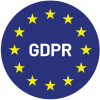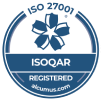One surefire way to stand out in a highly competitive SaaS industry is to foster customer loyalty and minimize churn.
Providing exceptional support experiences requires nurturing lasting relationships. This helps maximize customer lifetime value (CLV) and boost profitability. It involves resolving customer issues, anticipating needs, and delivering seamless support experiences.
Enable your customer service teams to influence customer satisfaction directly, which will result in retaining existing SaaS customers. Let’s explore further how crucial the interplay between customer service and retention is.
We’ll dive into actionable strategies for SaaS customer service teams to elevate their support practices.

Leverage advanced analytics for personalized support
Using advanced analytics tools goes beyond traditional metrics. These tools help SaaS customer service teams to deeply understand customer behavior, preferences, and potential pain points.
For example, your advance analytics suite might include:
- Customer data platforms like Segment and Tealium
- Predictive analytics tools like Salesforce Einstein and IBM Watson
- Customer success management platforms like Gainsight and Totango
- Automation and CRM integration tools like Zapier and HubSpot CRM
You can integrate these tools with customer support platforms to analyze data from various touchpoints. This will help customer support teams to work on SaaS customer retention by personalizing their assistance experience through:
- Using predictive analytics: By leveraging predictive analytics to anticipate customer issues before they occur, Sogolytics empowers businesses to stay ahead of potential challenges. For instance, if analytics indicate a feature has a steep learning curve, the support team can proactively contact customers with educational resources or personalized training sessions.
- Segmentation and customization: The support team can segment users by leveraging advanced metrics like product usage patterns, support interaction history, and satisfaction scores. Accordingly, they can tailor support strategies for each segment that resonate with their needs and preferences.
- Analyze support ticket trends: Dive into the types of issues customers raise repeatedly. Use this data to create comprehensive knowledge base articles, tutorials, and FAQs that empower customers to find solutions independently.
Establish a closed-loop feedback system
An advanced closed-loop feedback system goes beyond just collecting customer feedback. It is a process that includes customer insights to continuously improve and innovate.
A closed-loop system ensures feedback isn’t just collected but actively used to improve processes and customer experiences. This demonstrates a commitment to ongoing growth and customer satisfaction.
Here are some ways to use closed-loop feedback:
- Deploy targeted surveys: Elevate the granularity of your feedback mechanisms by deploying precision-targeted surveys. These are designed to capture specific insights following key customer milestones, such as onboarding, a major feature’s activation, or a support ticket’s conclusion.
- Analyze feedback systematically: Use text analysis tools to identify trends and common themes in customer feedback. Employ sophisticated text and sentiment analysis tools to dissect and interpret the vast array of customer feedback. This approach allows for collecting nuanced insights like emerging trends, sentiment shifts, and deep-rooted product usage issues.
- Share insights across teams: Feedback should be consistent in support. Share relevant insights with product, development, and marketing teams to drive broader product and service improvements. Ideally, you’d conduct regular, structured cross-departmental meetings to discuss customer feedback regarding product development, marketing strategies, and overall business objectives.
Emphasize proactive engagement
Retaining SaaS customers requires staying ahead of the curve and anticipating customer demands before they rise. Perhaps that is the reason why 73% of customers expect businesses to gauge their specific demands and needs!
Traditional support models wait for customers to encounter issues. However, retaining existing users to improve customer lifetime value (CLV) requires proactively reaching out to customers and addressing key points. This demonstrates continuous investment in the customer’s success.
Here’s how you can ensure such engagement:
- Use customer health scores: Track metrics like product usage, feature adoption, and support ticket history to calculate a customer health score. This allows teams to identify at-risk accounts and intervene before problems escalate.
- Offer personalized onboarding: Poor onboarding can result in 23% of SaaS customer churn (on average). Therefore, consider offering tailored onboarding experiences based on the customer’s use case and experience level to set them up for long-term success. For this, you’ll need to:
-
- Segment your customers by identifying different customer segments based on company size, industry, or the specific plan they’ve purchased.
- Offer flexible onboarding options like self-service guides, live webinars, or 1:1 training sessions. This allows customers to choose the method that best suits their learning style and availability.
Optimize your knowledge base for maximum impact
Turn your knowledge base into a self-service powerhouse. To achieve this, you should keep your information well-organized. It should also be easily searchable. Ensure that it addresses the complex questions that more experienced users may have.
Your knowledge bank should move beyond FAQs, with well-structured and search-optimized content that delivers enough details to enable users to grow their understanding and troubleshoot any issues. The goal is to empower users to resolve issues independently while reducing the burden on your support team.
Here are key aspects to consider when working on a knowledge base to boost customer retention:
- Enhancing accessibility and user engagement: Design your knowledge base with accessibility in mind. This involves implementing an intuitive interface and navigation system that allows users to find answers quickly. Use clear categories, subcategories, and robust tagging to help users find information quickly.
- Include advanced troubleshooting guides: Create in-depth articles, use-case-specific solutions, and even troubleshooting guides as a part of the knowledge base. This is useful for customers facing common technical issues, and even advanced users stuck at the product’s limited usage after a certain point.
- Incorporate video and visuals: Supplement text with screenshots, diagrams, and short video tutorials with step-by-step guides. Encouraging self-learning will reduce the need for direct support and for a better understanding of complex processes.
The bottom line
The key to customer retention is understanding that exceptional support is about more than technical fixes. Instead of that, SaaS teams can make things personal and offer customers extra benefits. This can help turn their support into a strong tool for keeping customers loyal.
The customer retention strategies covered here are just the tip of the iceberg. There’s much more to SaaS customer retention than prioritizing issue resolution. A dynamic customer support team with the right tools and tactics at their disposal can help you stay proactive in maximizing customer retention that drives business growth.
Sogolytics offers cutting-edge solutions designed to optimize customer support processes and maximize retention rates. To see how Sogolytics can revolutionize your customer retention efforts, request a demo today and discover the power of personalized support and value-added services firsthand.











